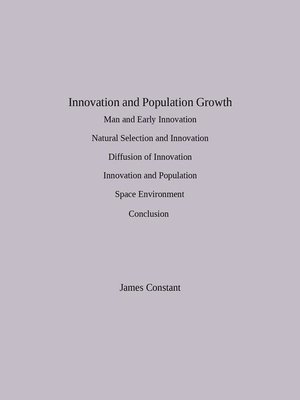
Sign up to save your library
With an OverDrive account, you can save your favorite libraries for at-a-glance information about availability. Find out more about OverDrive accounts.
Find this title in Libby, the library reading app by OverDrive.



Search for a digital library with this title
Title found at these libraries:
| Library Name | Distance |
|---|---|
| Loading... |
The coming of rapid scientific innovations since 1950 account for the accelerating human population growth. The human population increases by natural selection amplified by innovation which it uses to increase food production and to increase human comforts available in developed countries (food, clothes, shelter, health, etc.).
Innovations diffuse in society. As long as food lasts, population increases exponentially in time. And, we can predict future population scenarios in time. Population also increases with innovation in time. And, we can predict future innovation scenarios in time. Thus, total innovation increases with time and more innovations increase each century. Current and emerging scientific innovation and the earlier technical and non-technical innovations support population growth. In other words, assuming food is available, population growth follows present and past innovations.
Presently, the Earth's population is about 7 billion people. Since food and innovation cannot support unlimited population growth, population is expected to stabilize at about 10 billion people as the human species adapts, or perishes. Self sustained space colonization is unlikely before and impossible after the human species declines or perishes on Earth.







